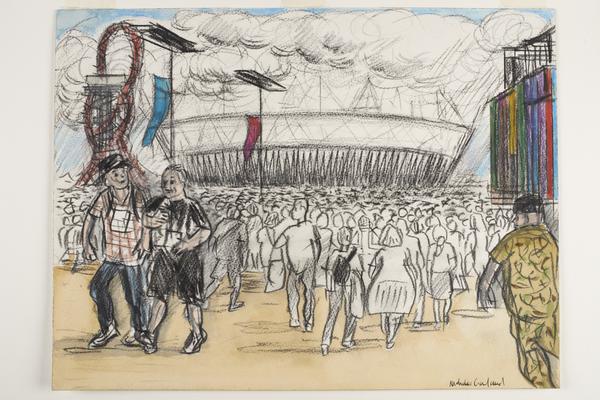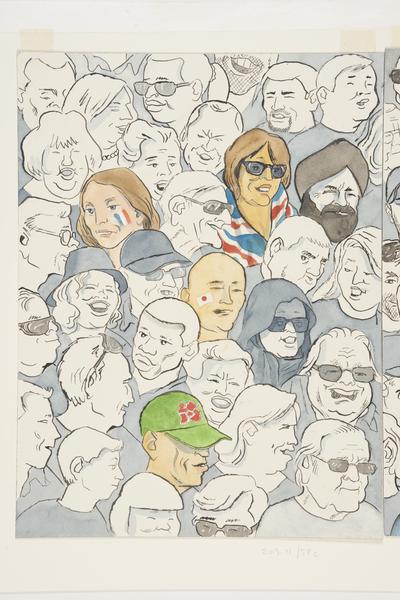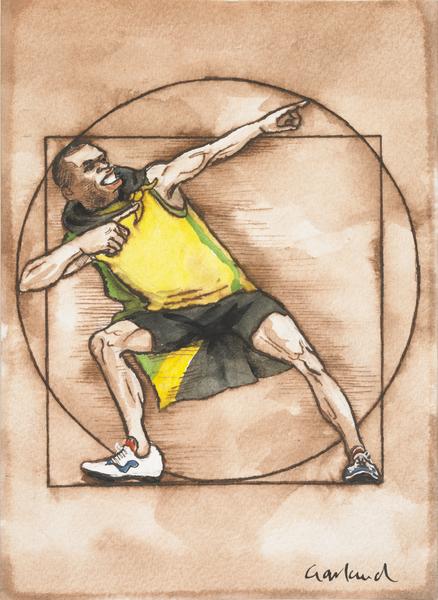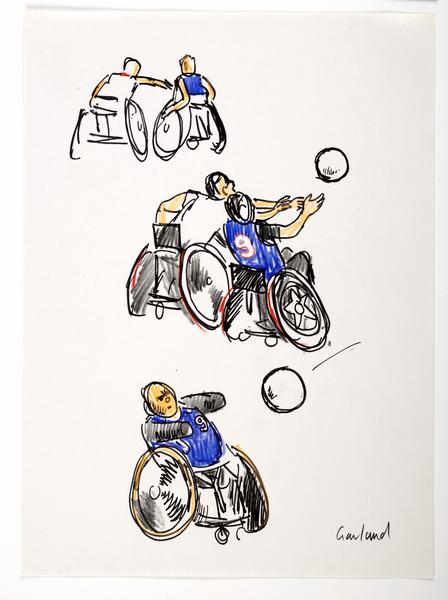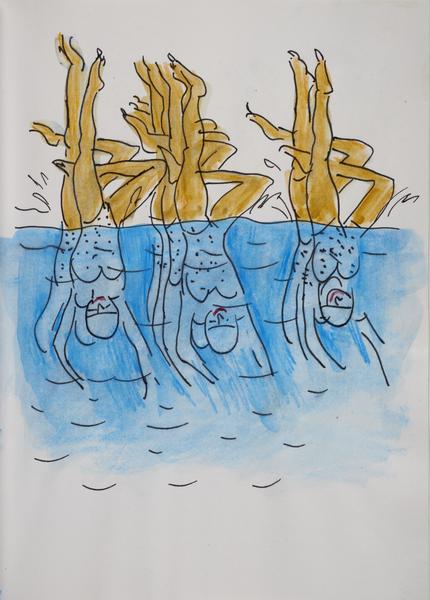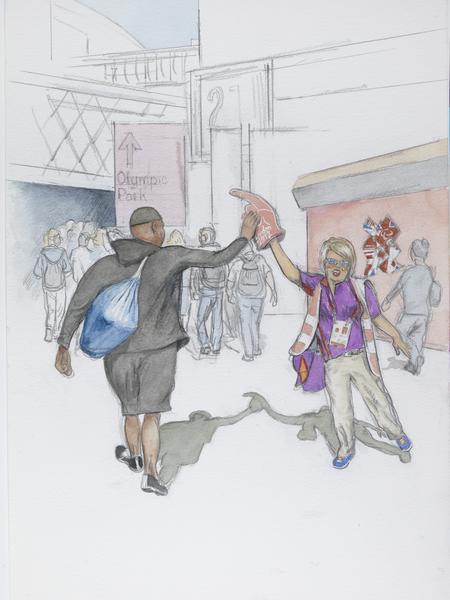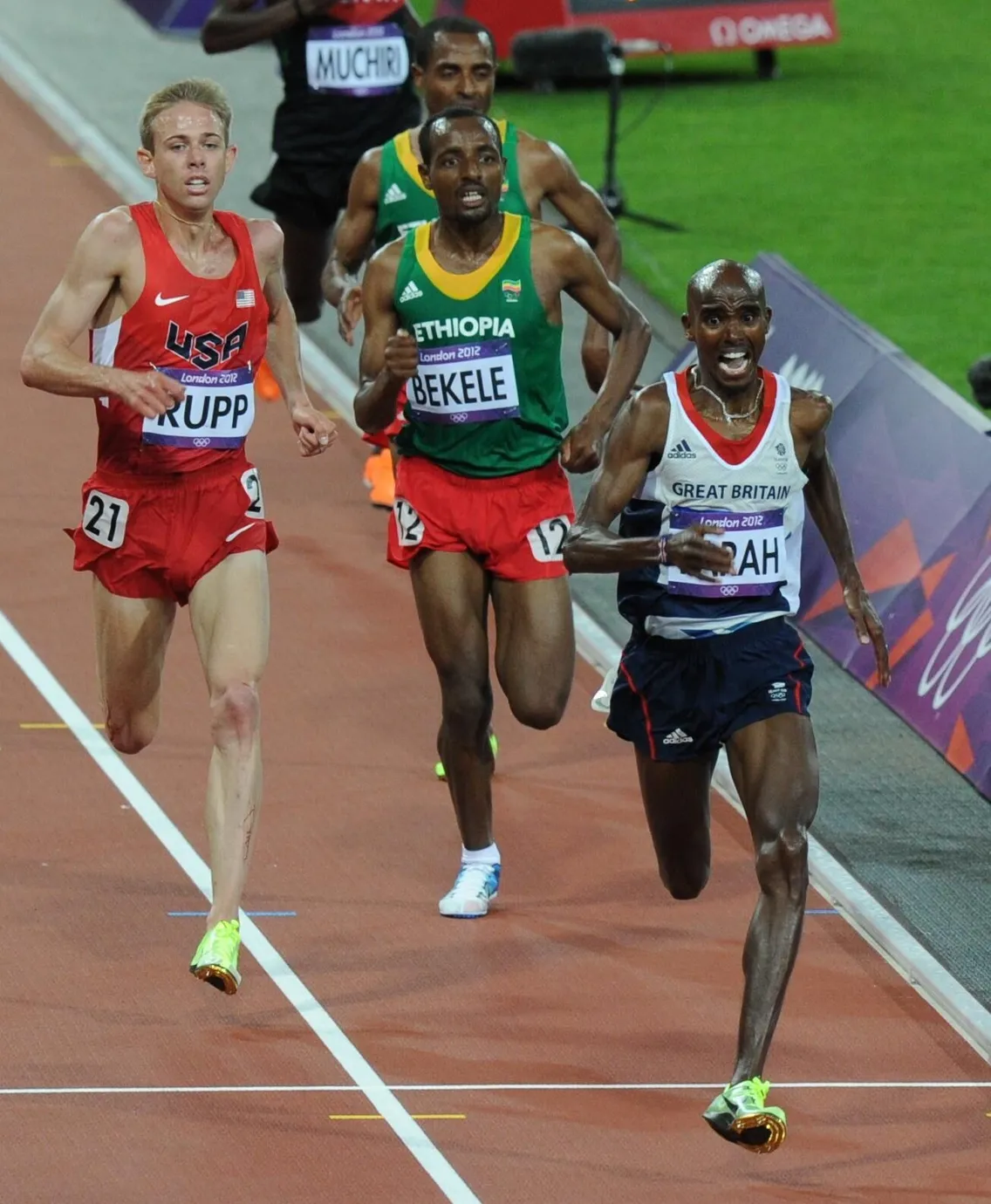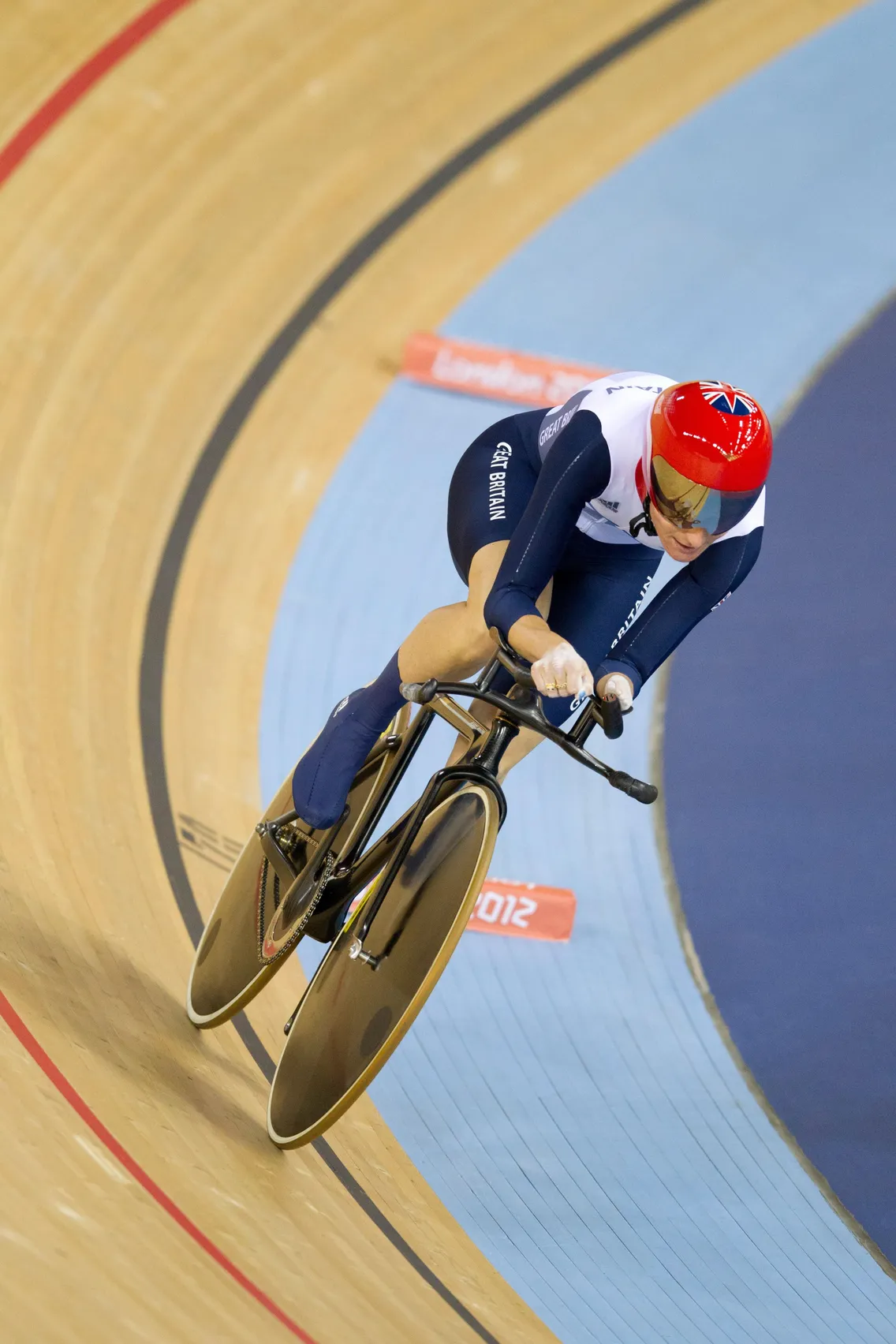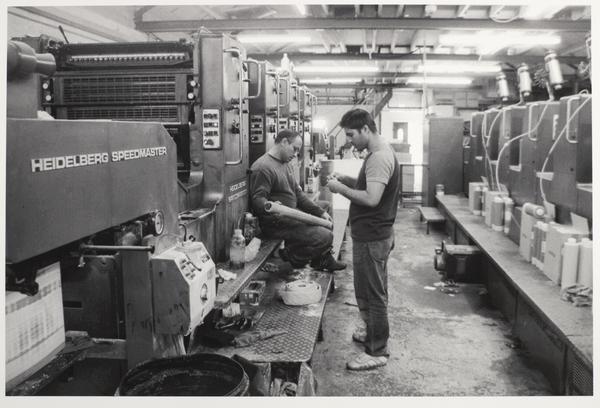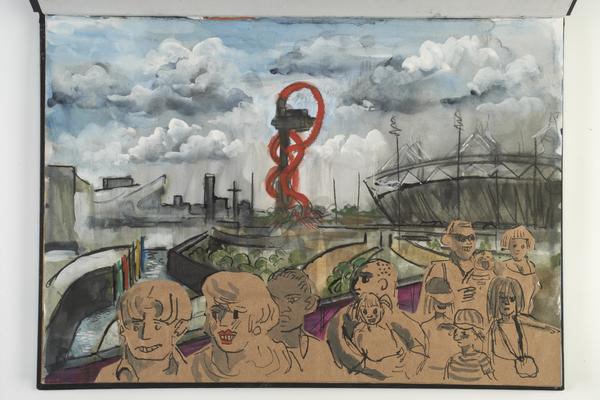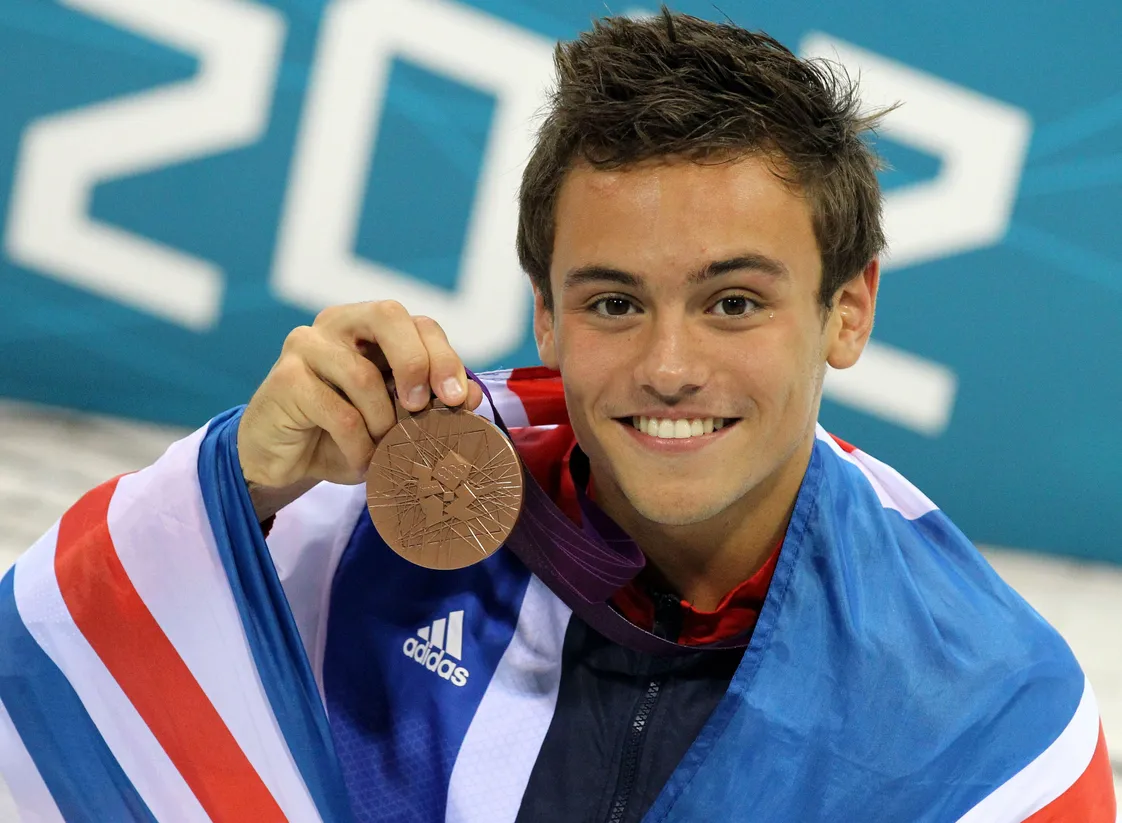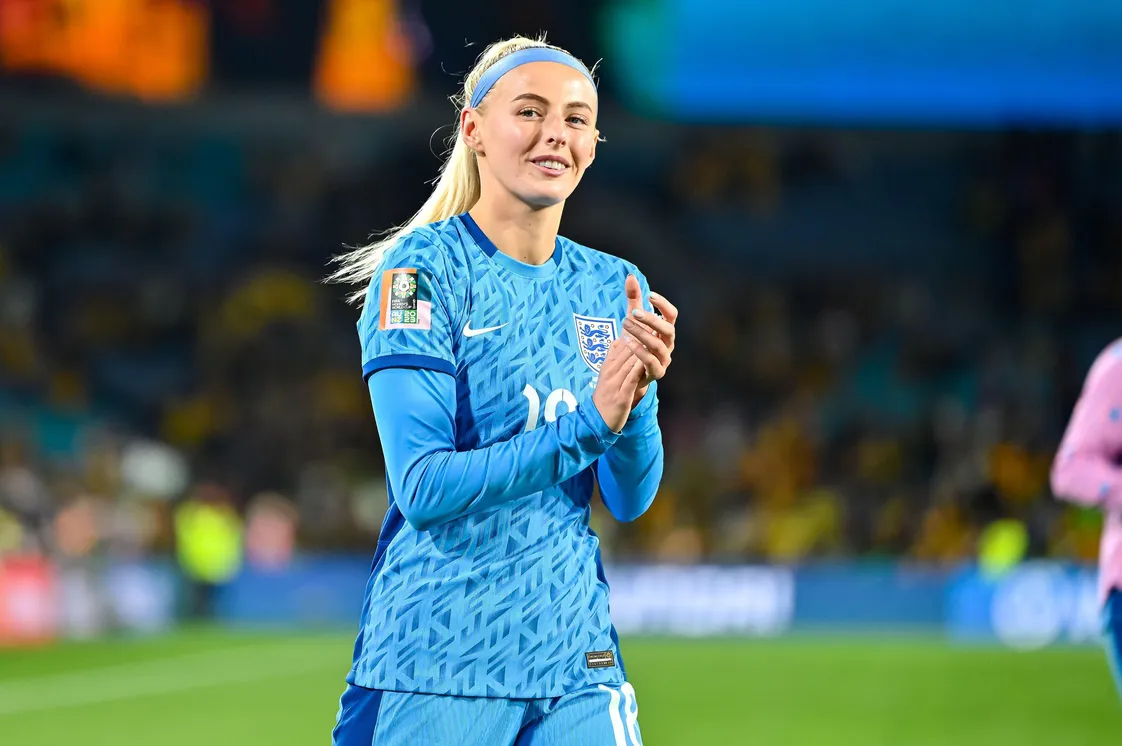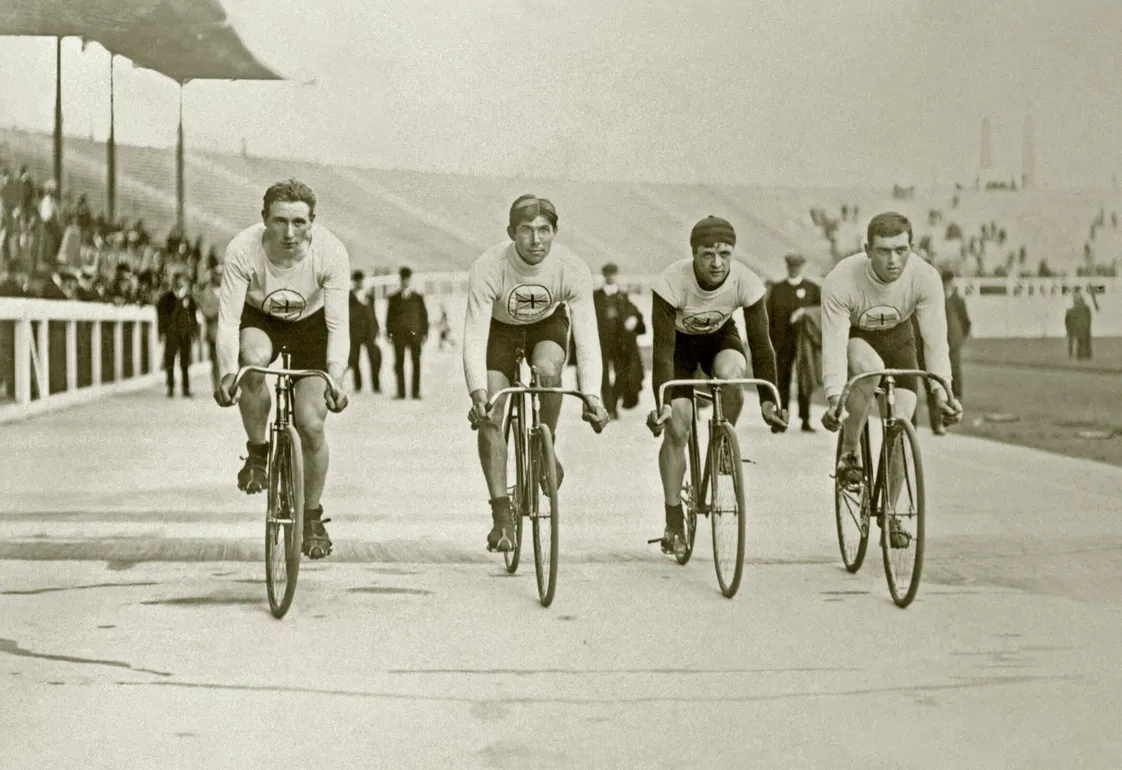The London 2012 Olympics
One of Team Great Britain’s greatest sporting achievements, the 2012 Olympics were a significant cultural moment that transformed the landscape of east London.
Stratford, Newham
25 July – 9 September 2012
Striving for gold
In 2012, London became the first city to host the modern Olympic Games three times. The Games were held between 25 July and 12 August, with the 14th Paralympic Games running between 29 August and 9 September.
Before, during and after the Games, London Museum collected objects like artworks, souvenirs and sports kits that captured the impact the Olympics had on the city.
How did London prepare for the 2012 Olympics?
Sights for a new Olympic Park were set on Stratford, east London. The chosen area included a formal industrial site, allotments, housing and other local amenities.

The Clays Lane Estate and travellers' site in the foreground were demolished to make way for the Olympic Park.
London Museum recorded oral histories and collected photographs and artworks depicting life in the area, before the businesses and homes were displaced by construction work. The communities that called this pocket of Stratford their home were forced to move.
The new Olympic Park featured the Olympic Stadium, Aquatics Centre, Velodrome and BMX Circuit, plus arenas for sports like hockey, handball and basketball. Athletes stayed within walking distance at the Olympic Village. It marked a change from the last London Games in 1948, where some athletes stayed in repurposed army barracks or even commuted from home.
Londoners’ attitudes towards the Olympics in the run up to 2012 were mixed. Most tended to support the city hosting the Games. But there was scepticism around how well-prepared it was to host it. And how much it would cost at a time when the country’s economy was struggling.
What happened at the Opening Ceremony?
The Opening Ceremony took place at the Olympic Stadium on 27 July. A crowd of 80,000 spectators and 900 million viewers worldwide witnessed the event. Gold medallist cyclist Bradley Wiggins rang the stadium bell to open the four-hour ceremony – wearing a yellow jersey that’s now in our collection.
“Remember Queen Elizabeth II and James Bond parachuting into the stadium?”
The ceremony began with a dreamlike, tightly choreographed artistic spectacle directed by Danny Boyle. The performance involved 10,000 volunteers, 12,956 props, two goats and a few celebrity cameos for good measure. Remember Queen Elizabeth II and James Bond parachuting into the stadium?
A rather unique Olympic Cauldron designed by Thomas Heatherwick
The Olympic Cauldron was lit at midnight after the speeches and athletes’ parade. But this Thomas Heatherwick design looked remarkably different to the cauldrons of the past.
It was made from 204 uniquely shaped copper stems – representing the 204 teams – each carrying a fragment of the Olympic flame. These separate pieces were fitted together in the ceremony so that the cauldron could burn as one. They remained lit for the course of the Olympics.
The cauldron was donated to the museum after the Games.
Who were the big winners at the 2012 Olympics and Paralympics?
The USA topped the table with 104 medals and 48 golds. But Great Britain came third with their most successful Olympics since the London 1908 Games: 65 medals, 29 of which were golds in 11 different sports. Diver Tom Daley and gymnast Elizabeth ‘Beth’ Tweddle were among those winning bronze, and their respective swimming trunks and leotard are in our collection.
A memorable Team GB moment came on 4 August, later dubbed ‘Super Saturday’. They’d won three gold medals earlier that day. But at a roaring Olympic Stadium, Jessica Ennis-Hill, Greg Rutherford and Mo Farah all won golds within the space of 43 minutes.
In the Paralympics, the People’s Republic of China came first. Great Britain also came in third place with a haul of 120 medals, including 34 golds. Ellie Simmonds, Sarah Storey and David Weir were among those adding multiple wins to Team GB’s tally.
What was the legacy of London 2012?
The sporting and cultural legacies of the 2012 Olympics are difficult to define, and they’ve been much debated since the games drew to a close.
But the most obvious physical effect of 2012 was on the redeveloped area of east London. It led to the creation of new neighbourhoods and infrastructure. And many of the arenas built in the Olympic Park are still home to the city’s sport today.




